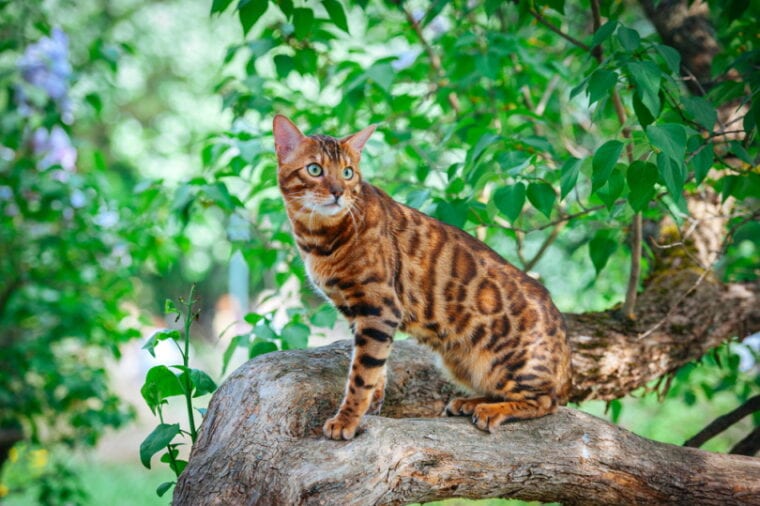
Click to Skip Ahead
The Bengal cat is quite recognizable — once you’ve seen one, there’s no mistaking what you’re looking at! They’ve become popular due to their striking appearance and energetic and loving temperaments.
But part of considering bringing a new cat to your home includes knowing their lifespan. After all, you want to keep your new pet with you for as long as possible.
So, the average lifespan of a Bengal and the things that you can do to help prolong your cat’s life are worth knowing. The average lifespan of Bengal cat can be from 12-20 years, depending on several factors. We get into all that and more here.

What’s the Average Lifespan of a Bengal Cat?
Cats in general tend to live longer than many other species, though it depends on several factors. Bengals are active and healthy cats with a long life expectancy. It’s estimated that Bengals can live for an average of about 12–20 years, depending on their health and other factors that are out of your control.
But a few things are inside your control that can help you see your Bengal living well into their 20s.
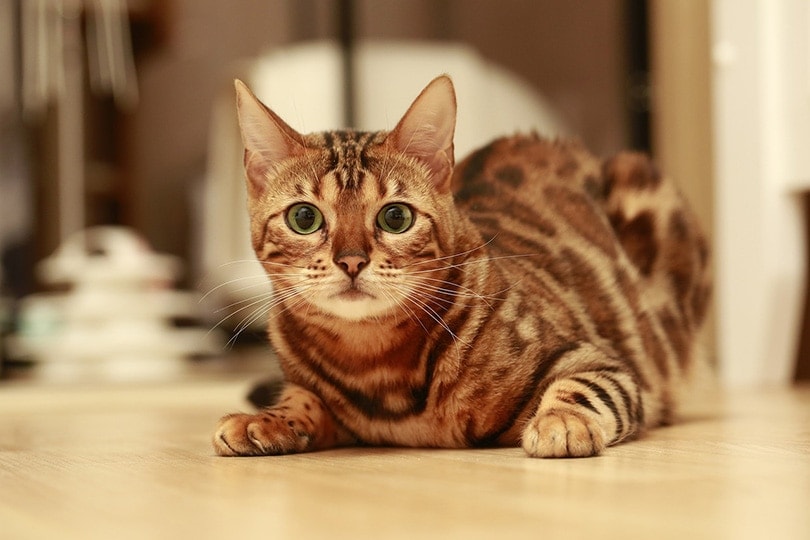
Why Do Some Bengals Live Longer Than Others?
1. Nutrition
Bengals, like any cat, are obligate carnivores, which means they rely almost entirely on animal protein to thrive. Bengals need the bulk of their food to be meat, but many manufactured cat foods include grains, fruits, and vegetables.
The Bengal is a highly energetic and active cat, so their nutritional requirements must be based on their current age and include enough protein, carbohydrates, and fats to sustain their high energy drive.
2. Hydration
Keeping your Bengal well hydrated is a huge factor in your Bengal’s current and future health. Dehydration is a serious issue — if a cat is often dehydrated, it could potentially lead to kidney failure and other issues.
Cats can be picky about their water, so if you suspect that your Bengal isn’t drinking enough, try different options. Try a cat fountain, as many cats prefer drinking from running water, or speak to your vet for other ideas and help.
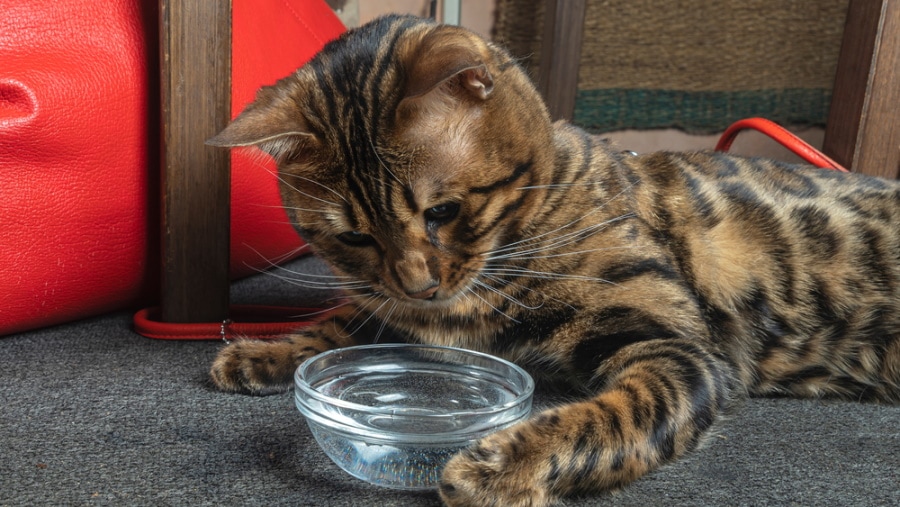
3. Enrichment and Exercise
If you have a Bengal, you have a cat that needs plenty of exercise and enrichment. This means taking time every day to play with your cat. They also do quite well walking on a harness. Without enough play and the opportunity to run, climb, and jump, your cat risks becoming obese.
Ensure that you have enough toys and areas for your Bengal to use. They love climbing up to high places, so you’ll want cat trees and maybe a few shelves and scratching posts.
4. Indoor vs. Outdoor
There’s a certain amount of controversy around the subject of indoor cats vs. outdoor cats. But it’s safe to say that as long as you don’t allow your Bengal to become bored and can provide them with healthcare, a high-quality diet, and plenty of playtime and love, an indoor Bengal will typically live longer than an outdoor cat.
The risks of going outside are dog or wild animal attacks, being struck by cars, and exposure to viral diseases. Also, the Bengal’s gorgeous coat is one-of-a-kind, and there’s a risk of someone snatching your cat.
Bengals do quite well walking on a harness, so this is an option that can give your cat outdoor exercise and entertainment while keeping them safe at the same time.

5. Catproof the House
Cats are fastidious with their grooming routine, so if they get anything toxic on their fur, they will lick it off. This means you need to place all cleaning supplies and other toxic items in places that your Bengal can’t access. They are smart and inquisitive cats and can usually open cupboard doors.
Also, make certain that any plants that you have are located where your cat can’t reach them. There are several plants and flowers that are toxic to cats, and cats love to explore with their mouths.
6. Dental Care
Dental problems can make a difference in the health of a cat. Taking care of your Bengal’s teeth can help prevent gum disease and other infections that can affect your cat’s overall health.
A study found that cats that ate dry food had fewer dental problems than cats that only ate wet food. However, wet food is important to help hydrate your cat, so a diet of both wet and dry could work best for some cats.
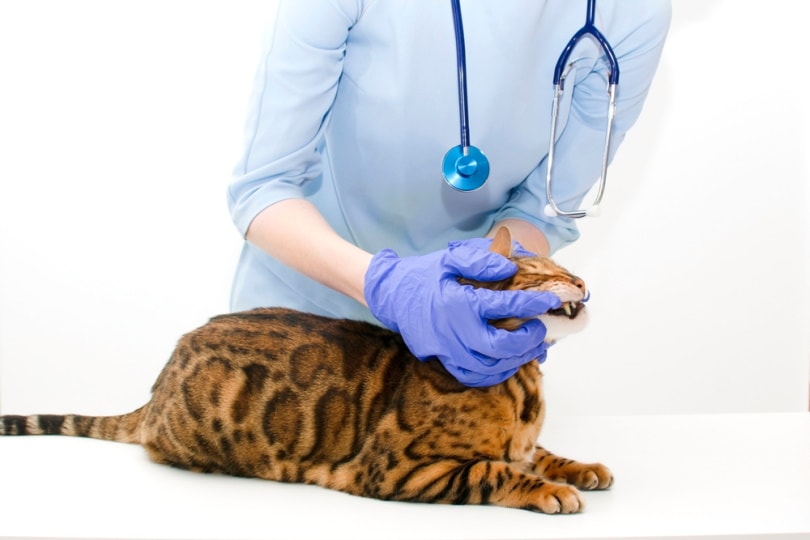
7. Genes
Bengals are a healthy breed, but they are prone to certain genetic disorders. One of the most common heart diseases in cats is hypertrophic cardiomyopathy, and they should also be tested for progressive retinal atrophy and PK deficiency.
8. Breeding History
The more purebred the cat is and the more inbreeding in their ancestry, the more likely the cat will have a lower life expectancy. Bengals are still a relatively new breed compared to breeds like the Egyptian Mau, which dates back to Ancient Egypt. It was in the early 80s that Bengals started to make an appearance.
Ask the breeder about the family history of the Bengal that you are interested in. You can also ask if they use Bengals from “outside” their usual breeding program.
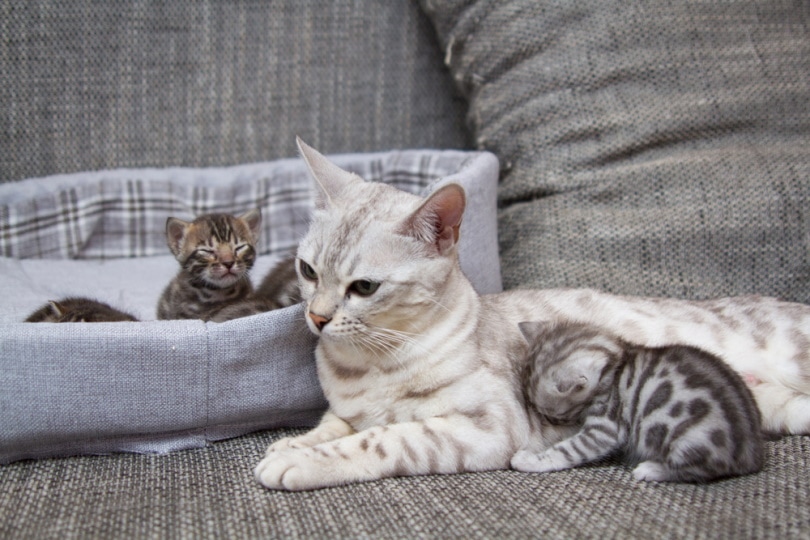
9. Healthcare
Taking your Bengal to get a regular wellness check every year is another way that you can keep on top of their health. Your vet can pick up on any potential health conditions before they become serious. This includes annual vaccines, which will further help your Bengal from becoming ill.
Having your Bengal spayed or neutered can prolong your Bengal’s lifespan. Not only will it keep your cat from running away during heat seasons, but it also helps prevent certain diseases.

The 6 Life Stages of a Bengal
Kitten
From birth to 6 months of age (roughly 10 human years)
Adolescent
From 7 months to 2 years (approximately 11 to 29 in human years)
Young Adult
3 years to 6 years (30 to 45 in human years)
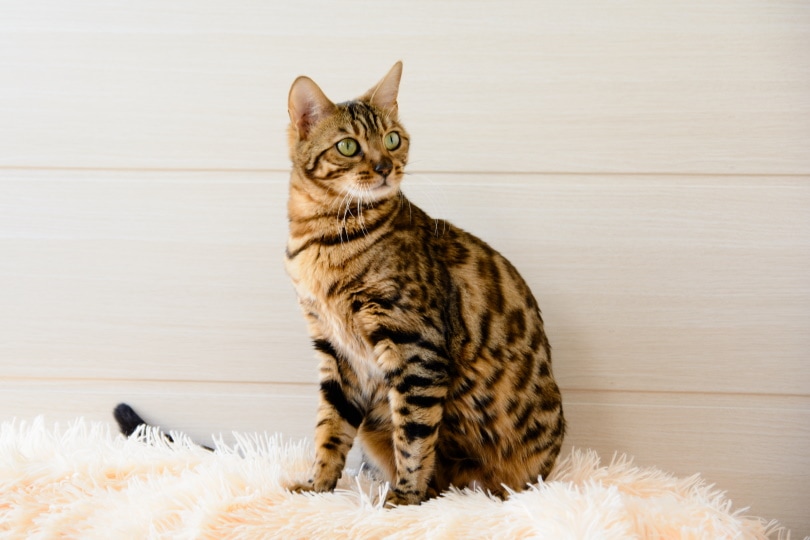
Mature Adult
7 to 10 years (45 to 60 in human years)
Senior
11 to 14 years (60 to 75 in years)
Geriatric
15 years and older (over 80 in human years)

How to Tell Your Bengal’s Age
The primary way to the age of your Bengal is through their size and weight. They are larger cats than many other breeds. When they are fully mature, they have muscular, long, and sleek bodies.
Bengals tend to stop growing by the time that they are 18 months to 2 years of age. At 2 years old, the average Bengal might weigh about 15 pounds and be 15 inches in height.
The best way to gauge your cat’s age is to ask your vet. Other common signs of a cat’s age include looking at their teeth and eyes.

Conclusion
A Bengal cat that is well loved and well taken care of can have a lifespan of up to 20 years and potentially beyond! Always schedule a visit to your vet’s clinic yearly and any time that you have questions or concerns.
Give your cat high-quality cat food, play with them often, and consider taking them for walks. You’ll end up with a healthy and happy cat that might just live a very long life.
See Also:
- Russian Blue Bengal Cat Mix: Pictures, Info, Temperament & Traits
- Charcoal Bengal Cat: Facts, Pictures, Origin, & History
Featured Image Credit: Jane Koshchina, Shutterstock






